Electoral College elections
“…and if there be more than one who have such Majority, and have an equal Number of Votes, then the House of Representatives shall immediately chuse by Ballot one of them for President…”
— U.S. Constitution, Article II, section 1, clause 3
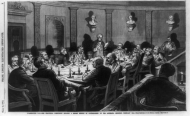 /tiles/non-collection/i/i_origins_electoral_leslie_lc.xml Image courtesy of the Library of Congress The Electoral Commission comprised of House Members, Senators, and Supreme Court Justices investigated the disputed Electoral College ballots from the South after the 1876 presidential election. The Commission, seen here meeting by candle light in the Old Supreme Court Chamber in the Capitol, awarded all the disputed ballots to Rutherford B. Hayes, who became President by a single electoral vote. The founders struggled for months to devise a way to select the President and Vice President. Gouverneur Morris, a delegate from Pennsylvania, compared the Federal Constitutional Convention’s debates on this issue to the Greek epic The Odyssey. “When this article was under consideration in the National Convention it was observed, that every mode of electing the chief magistrate of a powerful nation hitherto adopted is liable to objection, ” Morris recounted in an 1802 letter.
/tiles/non-collection/i/i_origins_electoral_leslie_lc.xml Image courtesy of the Library of Congress The Electoral Commission comprised of House Members, Senators, and Supreme Court Justices investigated the disputed Electoral College ballots from the South after the 1876 presidential election. The Commission, seen here meeting by candle light in the Old Supreme Court Chamber in the Capitol, awarded all the disputed ballots to Rutherford B. Hayes, who became President by a single electoral vote. The founders struggled for months to devise a way to select the President and Vice President. Gouverneur Morris, a delegate from Pennsylvania, compared the Federal Constitutional Convention’s debates on this issue to the Greek epic The Odyssey. “When this article was under consideration in the National Convention it was observed, that every mode of electing the chief magistrate of a powerful nation hitherto adopted is liable to objection, ” Morris recounted in an 1802 letter.
Constitutional Framing
Various methods for selecting the executive were offered, reviewed, and discarded during the Constitutional Convention: legislative; direct; gubernatorial; electoral; and lottery. A decision resulted only late in the Convention, when the Committee of Detail presented executive election by special electors selected by the state legislatures. This compromise preserved states’ rights, increased the independence of the executive branch, and avoided popular election. In this plan, Congress plays a formal role in the election of the President and Vice President. While Members of Congress are expressly forbidden from being electors, the Constitution requires the House and Senate to count the Electoral College’s ballots, and in the event of a tie, to select the President and Vice President, respectively.
The House Decides: 1801
The provisions for electing the President and Vice President have been among the most amended in the Constitution. Initially, electors voted for two individuals without differentiating between the ballot for President and Vice President. The winner of the largest bloc of votes, so long as it was a majority of all the votes cast, would win the presidency. The individual with the second largest number of votes would become Vice President. In 1796, this meant that John Adams became President and Thomas Jefferson became Vice President despite opposing each other for the presidency.
The 1800 presidential election further tested the presidential selection system when Jefferson and Aaron Burr, the Republican candidates for President and Vice President, tied at 73 electoral ballots each. The House, under the Constitution, then chose between Jefferson and Burr for President. The Constitution mandates that House Members vote as a state delegation and that the winner must obtain a simple majority of the states. The House deadlocked at eight states for Jefferson, six for Burr, and two tied. After six days of debate and 36 ballots, Jefferson won 10 state delegations in the House when the Burr supporters in the two tied states (Vermont and Maryland) filed blank ballots rather than support Jefferson.
The 12th Amendment
After the experiences of the 1796 and 1800 elections, Congress passed, and the states ratified, the 12th Amendment to the Constitution. Added in time for the 1804 election, the amendment stipulated that the electors’ would now cast two votes: one for President and the other for Vice President. While states varied in how they selected presidential electors through the 19th century, electors today are uniformly popularly elected (rather than appointed) and pledged to support a given candidate.
You might also like
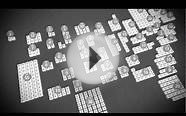
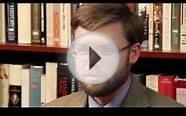

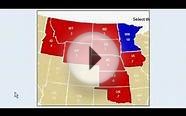
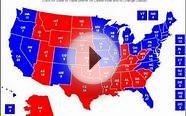
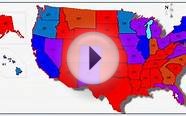







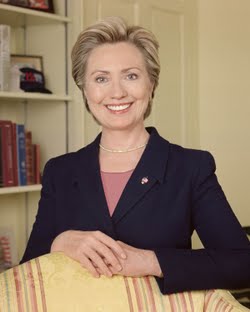 The 2008 United States presidential election in California took place on November 4, 2008 in California as part of the 2008 United States presidential election. Voters chose 55 electors, the most out of any of the 50 states, to the Electoral College, who voted for President and Vice President. California was won by Democratic nominee Barack...
The 2008 United States presidential election in California took place on November 4, 2008 in California as part of the 2008 United States presidential election. Voters chose 55 electors, the most out of any of the 50 states, to the Electoral College, who voted for President and Vice President. California was won by Democratic nominee Barack...